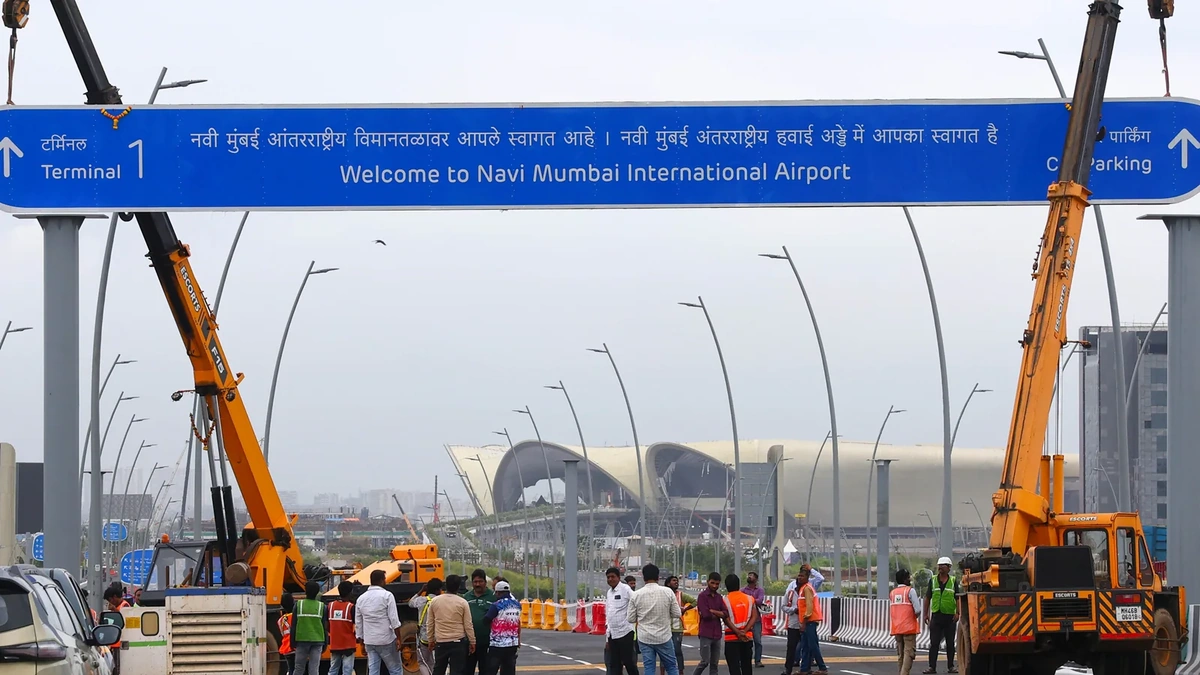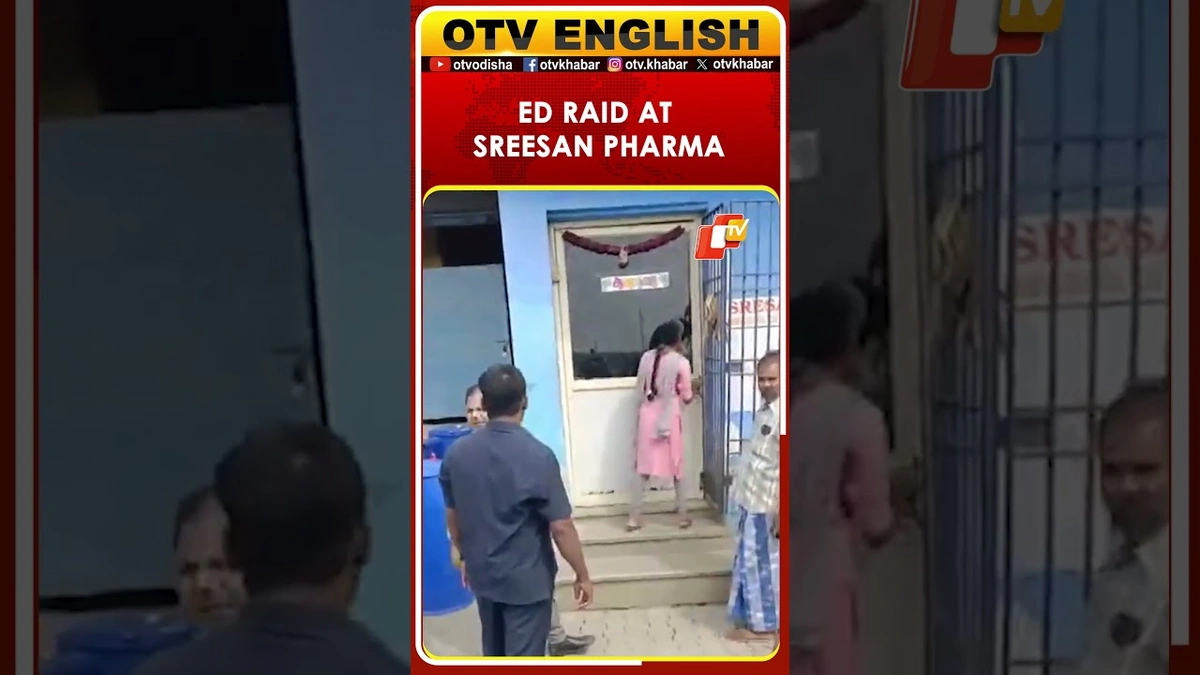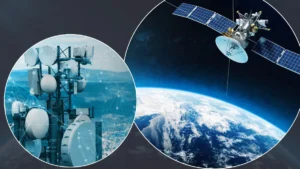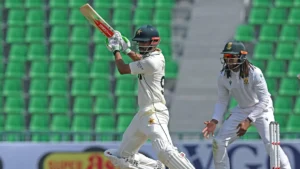PM Modi to Open Navi Mumbai International Airport Phase 1
The air crackles with anticipation. The dust from construction is (almost) settled. And the promise of a new gateway to India is about to be realized. Yes, friends, PM Modi is all set to inaugurate Phase 1 of the Navi Mumbai International Airport. But here’s the thing: it’s not just about another airport opening. It’s about what this airport means for Mumbai, for Maharashtra, and for India’s ambitions on the world stage. Let’s dive deep, shall we?
Why Navi Mumbai Needed Another Airport (So Badly!)

Mumbai, let’s be honest, has been bursting at the seams for decades. Chhatrapati Shivaji Maharaj International Airport (CSMIA), while iconic, has been operating way beyond its intended capacity. Think of it like trying to pour a monsoon’s worth of rain through a garden hose – bound to be spillage (and delays!). The existing airport’s single runway has been a major bottleneck, restricting the number of flights that can take off and land, leading to frustrating delays and higher airfares. The Navi Mumbai International Airport , envisioned as a second airport for the Mumbai Metropolitan Region (MMR), is designed to alleviate this pressure valve. It’s not just about convenience; it’s about unlocking economic potential and improving the overall quality of life for millions.
But, and this is a big ‘but,’ building an airport in the Mumbai Metropolitan Region is no walk in the park. Land acquisition, environmental concerns, and the sheer complexity of construction in a densely populated area have presented monumental challenges. That it’s finally happening is a testament to political will, engineering ingenuity, and a whole lot of patience. The project timeline has been long and arduous. Initially conceived in the late 1990s, the project faced numerous hurdles, including land acquisition issues, environmental clearances, and rehabilitation of affected villagers. What fascinates me is how the government navigated these challenges; a case study in infrastructure development, if you ask me.
The Economic Ripple Effect | More Than Just Flights
Okay, so an airport handles flights. Duh, right? But the real magic of an airport, especially one of this scale, is the economic ecosystem it creates. Think about it: the Navi Mumbai International Airport is poised to become a catalyst for economic growth in the region. It’s expected to generate thousands of jobs directly and indirectly, boosting sectors like aviation, hospitality, logistics, and tourism. The airport’s development is also expected to spur infrastructure development in Navi Mumbai and surrounding areas, including better roads, public transportation, and utilities. And, crucially, it will improve connectivity to the rest of India and the world, attracting investment and boosting trade. As recent eventshave shown, global connection is critical. That’s the real game-changer here.
So, what are the secondary keywords associated with the airport? The growth includes airport connectivity , real estate development , employment opportunities , and tourism revenue . Speaking of growth, the airport’s development is also expected to drive real estate development in Navi Mumbai and surrounding areas, with new residential, commercial, and retail projects expected to come up in the vicinity. This will further boost economic activity and create new opportunities for businesses and individuals. Navi Mumbai, already a planned city, is about to get a whole lot more buzz.
Beyond infrastructure, the airport’s capacity will have a profound impact. It’s not just about handling more passengers; it’s about facilitating the movement of goods, enabling businesses to expand, and attracting foreign investment. The ripple effects will be felt across the state and beyond.
What Phase 1 Means | A Glimpse into the Future
Phase 1 of the Navi Mumbai International Airport is designed to handle 20 million passengers per annum (MPPA). That’s a significant increase compared to the current capacity constraints at CSMIA. According to the project plan, it includes a terminal building, a runway, air traffic control (ATC) tower, and other essential infrastructure. Let me rephrase that for clarity: Phase 1 is not the whole picture, but it’s a pretty darn impressive start. And, crucially, it’s a statement of intent, signaling that India is serious about investing in its aviation infrastructure and connecting its cities to the global economy.
Construction challenges and the long timeline are something to keep in mind. The airport is envisioned to eventually handle 60 million passengers per annum. The airport is being developed in phases, with the ultimate goal of reaching a capacity of 60 million passengers per annum. This phased approach allows for incremental expansion and ensures that the airport can meet the growing demand for air travel in the region. The expanded airport infrastructure will alleviate congestion at CSMIA. A common mistake I see people make is underestimating the long-term planning involved in a project of this scale. It’s not just about building an airport; it’s about building a foundation for future growth.
Navi Mumbai Airport’s Impact on Air Travel
And what will this mean for you, the average traveller? Well, hopefully, fewer delays, more flight options, and potentially, more competitive airfares. What fascinates me is the potential for new routes and connections, linking Mumbai to destinations that were previously difficult or impossible to reach directly. The airport’s location in Navi Mumbai also offers easier access for travellers from Pune and other parts of Maharashtra, reducing the need to travel to Mumbai Island. Ultimately, the airport is expected to improve the overall air travel experience for millions of people.
It includes the airport location , flight routes , and passenger experience . Thinking about the impact of airport expansion , I’m excited about the possibilities. The airport’s modern facilities and expanded capacity are expected to enhance the passenger experience, making air travel more comfortable and convenient. What’s not to love?
Plus, the new routes are poised to connect Mumbai to new destinations. So, if you are thinking of taking a holiday, this might be your sign!
FAQ About the Navi Mumbai International Airport
When will the Navi Mumbai International Airport be fully operational?
Phase 1 is slated to open soon, but the entire project is planned to be completed in stages over the next few years.
How will the new airport affect traffic to the existing Mumbai airport?
It’s expected to significantly reduce congestion at Chhatrapati Shivaji Maharaj International Airport (CSMIA).
What transport options will be available to reach the new airport?
Plans include improved road and rail connectivity, including metro lines, to ensure easy access from various parts of the MMR.
Will international flights operate from the Navi Mumbai airport?
Yes, the airport is designed to handle both domestic and international flights.
What if I have connecting flights – will I have to switch airports?
Potentially, yes. But authorities are working on streamlining the transfer process between the two airports. Details will emerge as the airport becomes operational.
So, there you have it. The Navi Mumbai International Airport is more than just bricks and mortar; it’s a symbol of India’s ambition, its growing economic power, and its commitment to connecting its citizens to the world. It’s a story of challenges overcome, dreams realized, and a brighter future for Mumbai and the nation.













